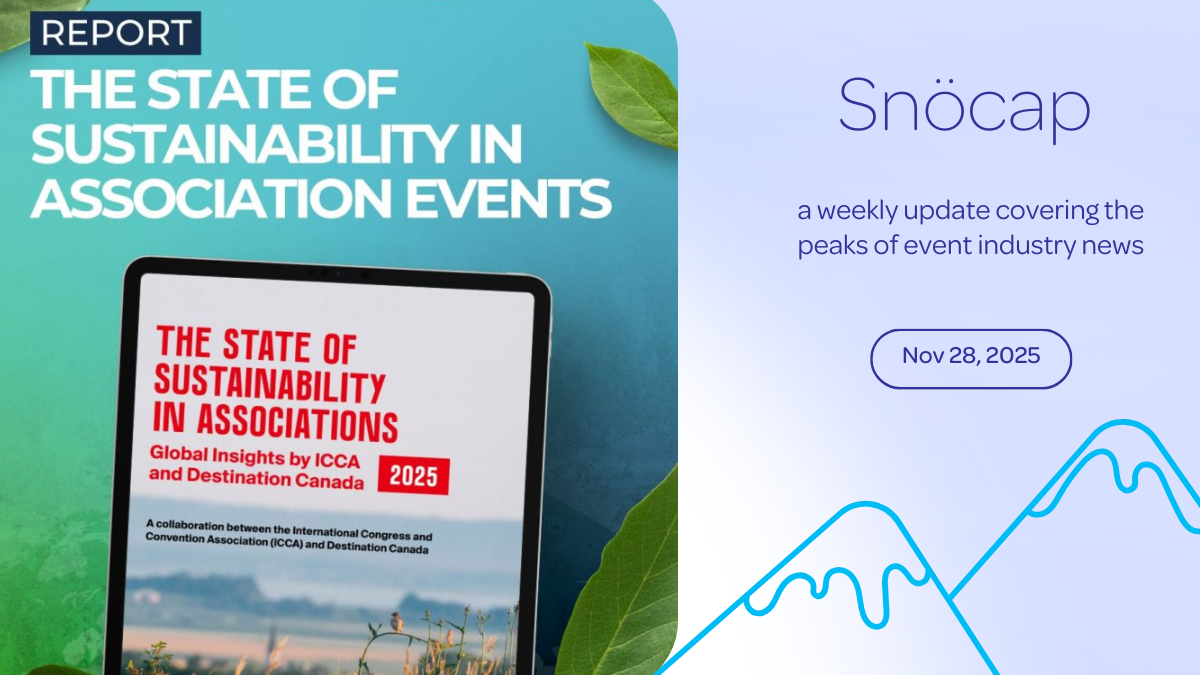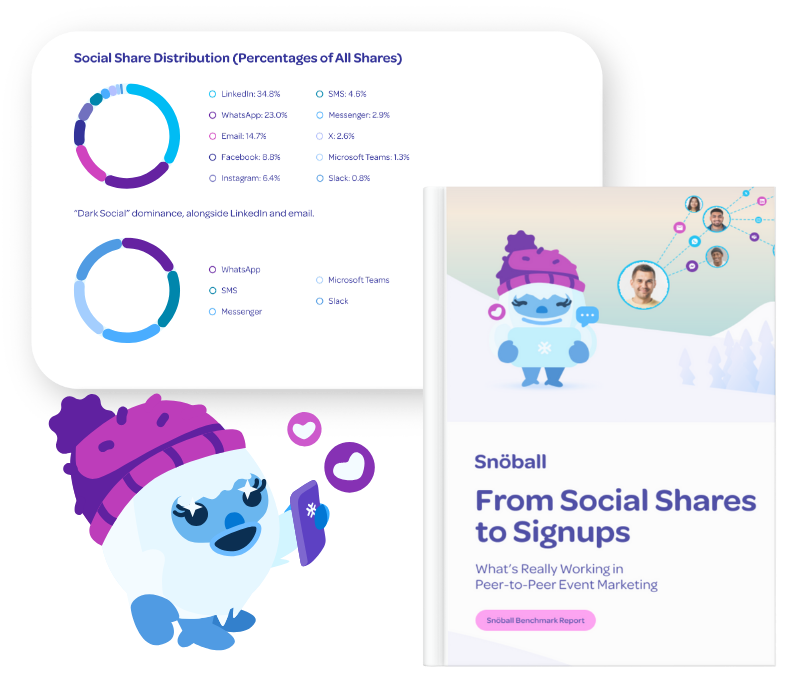We’ve all heard about shifting and pivoting to virtual (or ‘shivoting’ as Dahlia El Gazzar might say) and how events are completely rethinking their engagement strategies to connect with their shareholders. In some cases, this is certainly true – exhibitors and attendees have a fundamentally different experience at virtual events. They’ve taken a traditionally face-to-face opportunity and reimagined their strategies for engagement.
But for sponsors, the rhyme and reason behind why they sponsor remains exactly the same. Plain and simple, they want brand exposure. They want to be seen by your audience because they see value in capturing that market’s attention. And when we think about how virtual events support sponsor exposure, there are so many opportunities for marketing departments to become even more impactful.
When I’ve pitched sponsorships to executives, the first question they always ask is how do you know this will be successful? And that is quickly followed up by, how are we going to measure that success? For in-person events, that success metric can be hard to define. It’s not always easy to explain to your boss how a wall cling or temporary signage is acquiring new leads or generating buzz about your organization.
Virtual event sponsorships arm you with the answers to the executive’s questions. I can define exactly how we’re going to be successful through the built in features of event technology. Let’s explore 5 ways that virtual events are delivering exactly what sponsors need.
1. “This is Captain Kirk – Data, do you read me?”
Well, not that Data, the other kind. To put it short and sweet, tech gives us the ability to track and collect massive amounts of event data. When event organizers can deliver that information to sponsors, it creates an invaluable partnership between the two organizations.
Not only are sponsors getting the brand exposure they crave, event organizers are empowering them to improve that exposure. Marketing departments can tie a hard number to ROI in the form of impressions, clicks, web traffic, form fills and other conversion metrics. That data can also be benchmarked against other marketing activities, enabling marketers to make informed decisions on where they spend their future budgets. This is a major competitive differentiator between virtual and in-person events – the ability to track engagement and activity simply isn’t a capability of printed assets.
A9 – You can’t hide behind their being harder to track ROI at an in-person event. Online, your feet are to the fire and ROI is right there for the sponsors/exhibitors in the data. #expochat
— Rachel Wimberly (@TSNN_Rachel) June 10, 2020
Now let’s talk about the real modern marketing twist – digital retargeting. The idea of serving up advertisements across the internet to individuals that have landed on your website or clicked a digital asset. It’s done through a few different methods, but it does require audience data before advertisements can be placed.
Sponsors of your virtual event have the advantage of participating on a digital platform, which means all of the attendee data they need has already been collected. Not only are they going to get an opportunity to place their brand in front of your attendees during the event, they also have an unprecedented ability for continued engagement and visibility. Hang on to this idea – we’ll cover more on this later.
2. “Exactly how many people did you invite?”
We all know the excuses people give for why they aren’t coming to your dinner party – “That’s a bad night” or “I won’t know anybody” or “It’s too far” or “The restaurant is too expensive”. While we aren’t always happy to hear them, we know that these are fair excuses. People are ultimately taking time out of their lives to spend at your party.
The same is true for larger event organizers. They hear the same objections from attendees and exhibitors about time, price and travel obligations. Recruiting attendees for your event is inherently difficult, and even if your event sells out every year, floor space limits your audience.
That isn’t the case with virtual events – there’s no limit on spacing and show recruiters face far fewer objections. Companies can afford to send multiple attendees, which grows the overall footprint between an event and an organization. And a new audience of primarily introverts are also more accessible when promoting a virtual event.
So what does that all mean for sponsors? Exactly what you think it means – more attendees means more eyes on them! It ties directly back into their core goal of brand exposure, there’s nothing more valuable than enhancing sponsor reach to your audience.
3. “So, we’re all using iPhone’s now?”
There’s nothing like sending a text through iMessage and seeing a little blue message come up. On the flip side, there’s nothing worse than seeing the dreaded green response when the person is responding with an Android. The emoji’s don’t work, low-res images abound and it’s overall just not the same experience.
It’s kind of like when a sponsor chooses the least-attended track at your event as a focus – all of that promotional material targeted at an audience that never arrived. Virtual events work around this challenge by using their event technology as a hub.
Each and every attendee, exhibitor and speaker is leveraging the same system to participate in your virtual event. That means sponsors can be sure that they’re getting prime-time visibility no matter where attendees land within the event tech platform. They can’t accidentally miss your sponsors’ brands by walking into the wrong session.
Event technology has another major benefit for sponsors – pre-event promotions. Rather than simply appearing on the show floor, virtual events leverage event technology throughout the pre-show and live portion of the event. With the entire event hosted virtually, sponsor placements are saturated with impressions before the show even starts, boosting their visibility and brand awareness during the live event.
4. “Wait! We have technology!”
Let’s keep talking about event technology and how it adds to the options for a sponsor. We’ve already seen clever ways that event management software is extended to provide additional revenue in the form of premium digital add-ons.
That idea works for sponsors too – think of all of the different pieces of event technology that is used for your event. Now consider what you added to run your virtual event – are you branding and selling each piece of your event technology to a sponsor?
If not, start to think about your technology stack. Sponsors want options that fit with their organizational brand – some prefer a high-touch engagement option, some prefer a set-it-and-forget-it digital placement. Your virtual event technology provides them the opportunity to promote as works best for them.
If you’re having trouble imagining, live streams can be branded, sponsor videos are easily presented through a virtual platform, online happy hours can be sponsored – the possibilities are endless. Not only that, but typically the overhead costs are lower for sponsors. It’s expensive to pay for an open happy hour or carve out time in an executive’s schedule to attend an event. Help your sponsors take advantage of the accessibility that your virtual event offers and continue innovating on their behalf with your event technology.
“We subscribe to the philosophy that sponsors are effectively partners, and the best relationships will be ones of meaningful co-creation that brings value to the community.” – Arianna Rehak, Matchbox Virtual Media
6. “Ew, something got me all sticky!”
We’ve mentioned it a few times, but stickiness deserves it’s own section. Virtual content tends to be stickier than content delivered face-to-face. Now, I’m not saying we should close down our colleges and switch over to online courses. But from a marketing perspective, a digital asset is more likely to be kept and accessed over and over again.
The reality is we walk around trade shows, talk to salespeople and pick up literature that ends up sitting in our free tote bag for months (I’m not the only one, right?). Printed assets just don’t have the staying power – it’s only accessible if it’s where I am, when I need it. A virtual asset is perpetually available and can typically be updated in real time to maintain recency.
Your virtual event is the same way! Most sessions and presentations are recorded, attendees can go back and access them at any time. Your event technology creates a platform for the virtual event to generate even more impressions and leads even after it’s completed. Any registrants who missed the live sessions continue adding to the in-person engagement metrics, along with those who did attend.
And every single time those attendees return to your virtual event platform, sponsors are treated to even more brand visibility. This is also true during pre-event promotion. As attendees and exhibitors explore the platform, sponsor brands are continually placed in front of their target audiences.
Although we’ve touched on it already, retargeting enhances your brand’s stickiness at an event. Working in conjunction with one another, virtual event technology and data retargeting creates an omnichannel marketing approach for sponsors that helps them stay in front of the right people all year long.
Bottom Line
Your virtual event is an absolute home-run opportunity for sponsors. Between the ability to collect and retarget data, along with the massively expanded reach and centralized audience, virtual events are a sponsor’s dream.
Don’t miss out on your opportunity to help your bottom line, while helping your sponsors grow their footprint. You’re armed with five reasons why sponsors should love your virtual event – now, go forth and secure thy sponsorships!
Check out how Snöball can deliver even more opportunities for your sponsors.
By Kevin Gough – snöblogger





